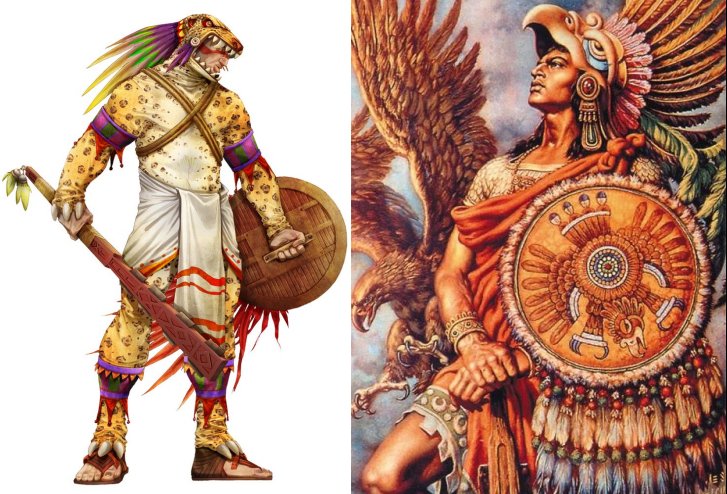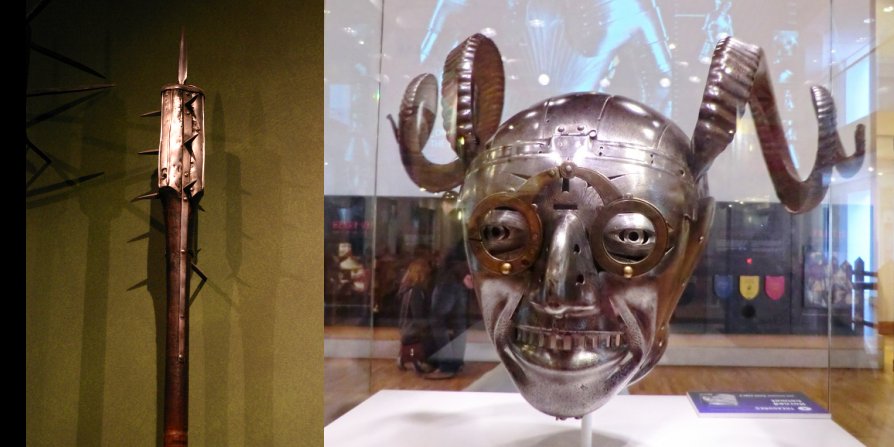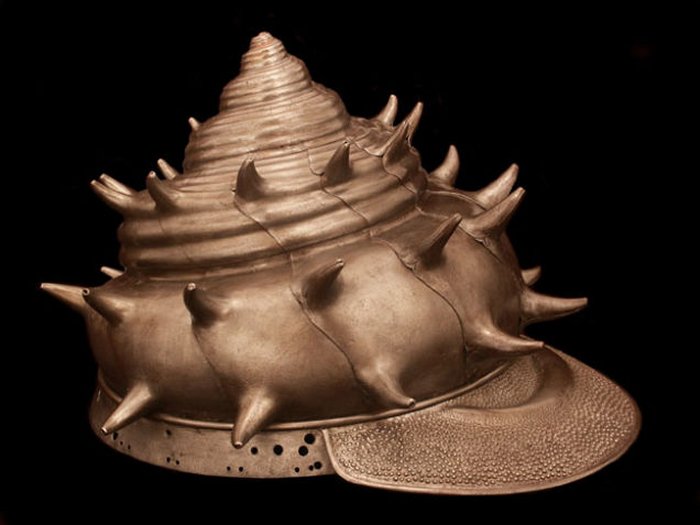Truly Bizarre And Most Fearsome Ancient Helmets Ever Seen
AncientPage.com - Going to war in ancient times involved more than just great military strategy and excellent warrior skill. To conquer your enemy, it was assumed the warriors must look as fearsome as possible.
We have previously seen that Aztec Eagle Warriors and Jaguar Warriors who were without doubt some of the most skilled and feared fighting forces of the ancient world wore special armor and headdresses. Eagle Warriors were adorned in eagle feathers and wore headgear with an eagle head on it, their faces looking out from an open beak. Jaguars wore suits made from the pelts of pumas (jaguars) and associated themselves with their god of night.
It is believe that Vikings filed their teeth to frighten opponents in battle or to show their status as a great fighter.
The Winged Hussars were one of the most effective military forces in the world. The Winged Hussars were known for the wings with long feathers worn on their backs or attached to the saddles of their horses, which during a charge uttered a sound of vibrating feathers that frightened enemy infantry.
King Henry VIII is today often remembered for his many marriages. He also played a critical role in the English Reformation, turning his country into a Protestant nation. King Henry VIII also had an unusual taste in weapons and armour.
Helmets fitted with mask-like visors were a popular German and Austrian fashion about 1510 to 1540. With their visors forged and embossed as humorous or grotesque human masks, such helmets were often worn in tournaments held during the exuberant pre-Lenten (Shrovetide) festivals, celebrations somewhat akin to the modern Mardi Gras.
Grotesque human mask-like visors were really popular in Germany and Austria in the early 16th century.
Other ancient helmets were made in the likeness of frightening animals or strange objects.
Kolman Helmschmid, Helmet (Burgonet) of Emperor Charles V, c. 1530, Patrimonio Nacional, Real Armería, Madrid
Helmet in the form of a sea conch shell, 1618, Japan
The ceremonial and parade helmets of Charles V
Desiderius Helmschmid, c. 1540
Impressive helmet masks abound in the region spanning the present-day national borders of Côte d'Ivoire, Mali, and Burkina Faso. Sculptors carve works intended to incite fear by making visual references to powerful animals, including crocodiles, warthogs, and antelopes.
See also:
Winged Hussars: Facts And History About The Polish Warriors, Their Armor And Military Tactics
Fearsome Aztec Eagle Warriors And Jaguar Warriors Of Mesoamerica
King Henry VIII’s Walking Staff And Other Unusual Weapons
The aggressive imagery artists create in helmet masks like this one contrasts with their more delicate handling of kpeliye'e face masks. Not associated with any single animal, kponyugo helmet masks foster spectators' uncertainty and apprehension.
The aggressive imagery artists create in helmet masks like this one contrasts with their more delicate handling of kpeliye'e face masks. Not associated with any single animal, kponyugo helmet masks foster spectators' uncertainty and apprehension.
Helmet Mask (Kponyugo)
The mask's open jaws and sharp teeth appear ready to devour its prey and thus visually underscore its ferocity. Members of poro and other fraternal associations in the region don composite helmet masks and full-body outfits during funerals and on other occasions to punish human lawbreakers and deter malevolent spirits.
Due to the aggressive and combative nature of the helmet masks and their performances, women and children are enjoined to avoid seeing them, a stricture honored due to the costly consequences that transgressions precipitate.
Roman Cavalry Helmet, 100-250 A.D.
The most vulnerable part of the soldier in battle was his head, so the search for protection by some form of helmet goes back to the earliest times. The technology of armor was constantly evolving and different armies during different periods favored special shapes for their helmet.
Helmets were purpose-built to protect the wearer against the specific weapons he faced, but as we have just seen, the helmets were often also especially designed and modified to frighten the enemy.
Copyright © AncientPages.com All rights reserved. This material may not be published, broadcast, rewritten or redistributed in whole or part without the express written permission of AncientPages.com
More From Ancient Pages
-
 Dangerous Anomaly Inside Mysterious European Mountain Remains Unexplained – Unusual Ancient Connections – Part 1
Ancient Mysteries | Mar 13, 2021
Dangerous Anomaly Inside Mysterious European Mountain Remains Unexplained – Unusual Ancient Connections – Part 1
Ancient Mysteries | Mar 13, 2021 -
 Use Of Horses In the Bronze Age – New Facts
Archaeology | Jul 14, 2020
Use Of Horses In the Bronze Age – New Facts
Archaeology | Jul 14, 2020 -
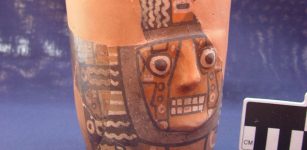 Ancient Pottery Reveal How Peru’s First Great Empire Wari Functioned
Archaeology | Mar 14, 2023
Ancient Pottery Reveal How Peru’s First Great Empire Wari Functioned
Archaeology | Mar 14, 2023 -
 2,500-Year-Old Phoenician Shipwreck Being Rescued By Archaeologists
Archaeology | Jul 4, 2023
2,500-Year-Old Phoenician Shipwreck Being Rescued By Archaeologists
Archaeology | Jul 4, 2023 -
 Glooskap (Gluskap): Mythical Hero Who Defeated Evil Sorcerers And Demon Followers
Featured Stories | Jan 25, 2016
Glooskap (Gluskap): Mythical Hero Who Defeated Evil Sorcerers And Demon Followers
Featured Stories | Jan 25, 2016 -
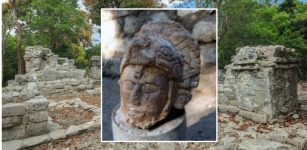 Sculpted Head Of Ancient Warrior Wearing A Serpent Helmet Found At Chichen Itza
Archaeology | Nov 13, 2023
Sculpted Head Of Ancient Warrior Wearing A Serpent Helmet Found At Chichen Itza
Archaeology | Nov 13, 2023 -
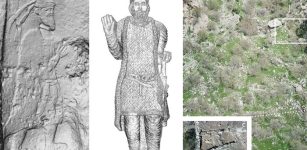 Mysterious 2,000-Year-Old Lost City Of Natounia May Have Been Found!
Archaeology | Jul 20, 2022
Mysterious 2,000-Year-Old Lost City Of Natounia May Have Been Found!
Archaeology | Jul 20, 2022 -
 Evidence The Khufu Channel Aided The Construction Of The Giza Pyramids Found – Scientists Say
Archaeology | Aug 31, 2022
Evidence The Khufu Channel Aided The Construction Of The Giza Pyramids Found – Scientists Say
Archaeology | Aug 31, 2022 -
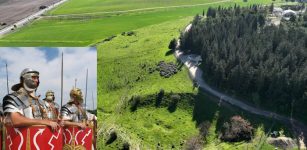 First Roman Military Amphitheater Unearthed Near Megiddo
Archaeology | Jun 1, 2022
First Roman Military Amphitheater Unearthed Near Megiddo
Archaeology | Jun 1, 2022 -
 Selene – Greek Goddess Of The Moon And Myth About Love, Jealousy And Punishment
Featured Stories | Jan 24, 2019
Selene – Greek Goddess Of The Moon And Myth About Love, Jealousy And Punishment
Featured Stories | Jan 24, 2019 -
 Deformed Skulls And Clues Found In Ancient Cemetery In Hungary
Archaeology | May 1, 2020
Deformed Skulls And Clues Found In Ancient Cemetery In Hungary
Archaeology | May 1, 2020 -
 An Intact 4,000-Year-Old Burial Chamber Found In Aswan
Archaeology | Mar 28, 2017
An Intact 4,000-Year-Old Burial Chamber Found In Aswan
Archaeology | Mar 28, 2017 -
 Secret Hidden Freemasonic Messages Concealed In Ancient Egyptian Artifacts And Roman Works – A Misunderstood Object? – Part 1
Ancient Mysteries | Feb 18, 2022
Secret Hidden Freemasonic Messages Concealed In Ancient Egyptian Artifacts And Roman Works – A Misunderstood Object? – Part 1
Ancient Mysteries | Feb 18, 2022 -
 Easter Island’s Statues Reveal Bodies Covered With Unknown Ancient Petroglyphs
Archaeology | Jan 21, 2014
Easter Island’s Statues Reveal Bodies Covered With Unknown Ancient Petroglyphs
Archaeology | Jan 21, 2014 -
 Mysterious Ancient Tomb Reveals ‘Impossible’ Human Connection To Cosmos – Human Anomaly? – Part 2
Ancient Mysteries | Oct 15, 2020
Mysterious Ancient Tomb Reveals ‘Impossible’ Human Connection To Cosmos – Human Anomaly? – Part 2
Ancient Mysteries | Oct 15, 2020 -
 Karahunge – ‘Speaking Stones’ With Secrets – Remarkable Prehistoric Structures Of Armenia
Places | Jun 4, 2020
Karahunge – ‘Speaking Stones’ With Secrets – Remarkable Prehistoric Structures Of Armenia
Places | Jun 4, 2020 -
 Unexplained Ancient Wars In America – Knowledge Of Ancient High-Tech Weapons? – Part 1
Ancient Mysteries | Sep 29, 2020
Unexplained Ancient Wars In America – Knowledge Of Ancient High-Tech Weapons? – Part 1
Ancient Mysteries | Sep 29, 2020 -
 Soyal: Hopi Indians’ Winter Solstice Celebration And Arrival Of Katchinas
Ancient Traditions And Customs | Mar 29, 2019
Soyal: Hopi Indians’ Winter Solstice Celebration And Arrival Of Katchinas
Ancient Traditions And Customs | Mar 29, 2019 -
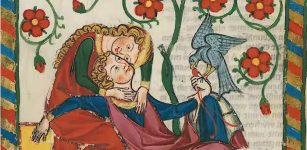 Valentine’s Day’s Connection With Love Was Probably Invented By Chaucer And Other 14th-Century Poets
Ancient Traditions And Customs | Feb 14, 2023
Valentine’s Day’s Connection With Love Was Probably Invented By Chaucer And Other 14th-Century Poets
Ancient Traditions And Customs | Feb 14, 2023 -
 Oldest Known Evidence Of Artificial Cranial Deformation Revealed In Croatia
Archaeology | Aug 26, 2019
Oldest Known Evidence Of Artificial Cranial Deformation Revealed In Croatia
Archaeology | Aug 26, 2019


